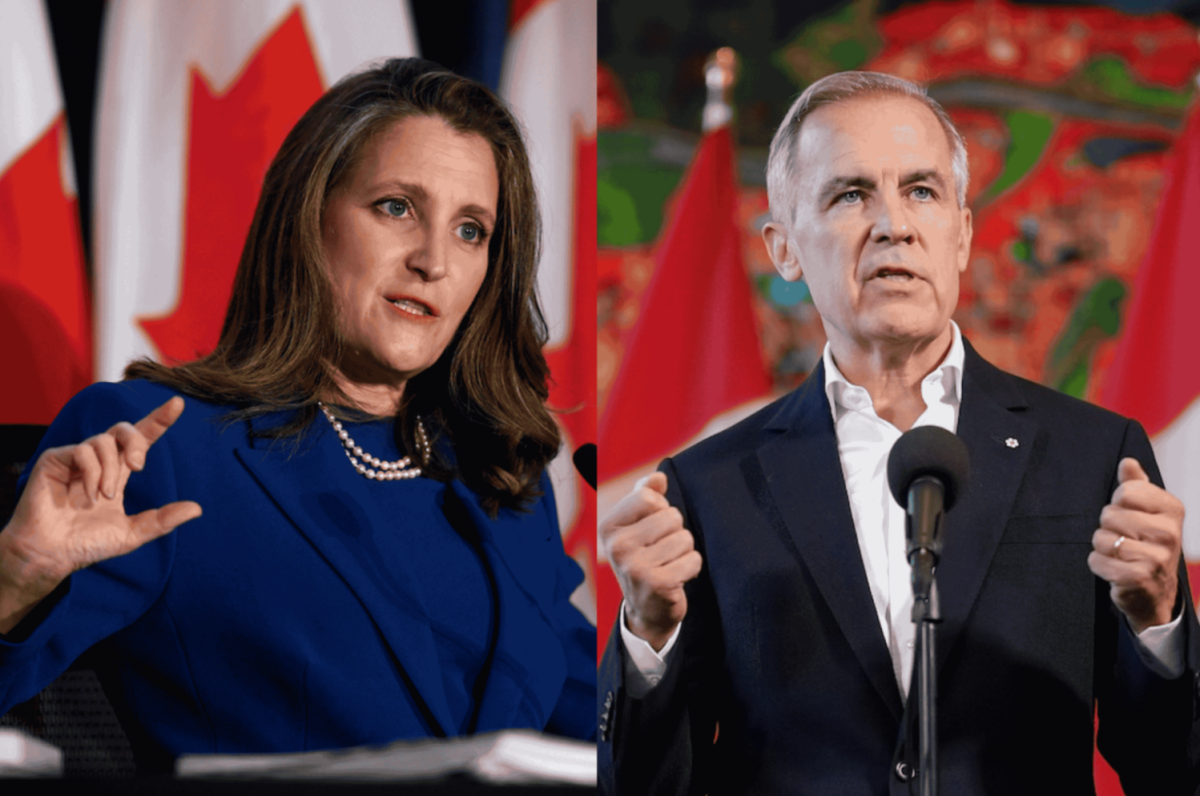April 2, 2025. That’s the day that U.S. President Donald Trump signed an executive order to impose the most extensive American tariffs since the infamous Smoot-Hawley Tariff Act of 1930. President Trump has dubbed April 2 “Liberation Day,” claiming that his wide-ranging tariffs will liberate the nation from the supposed wrongdoings of every single country that is a major American trade partner. Instead, Trump’s tariffs have caused the United States to teeter on the edge of economic peril, and his uneducated, unethical, and unprofessional behavior regarding these tariffs shows a dangerous lack of both economic and historical understanding.
A tariff is a tax on goods being imported into a nation. The aforementioned Smoot-Hawley Tariff is perhaps the most well-known U.S. tariff ever enacted, and likely the most catastrophic. In the wake of the early Great Depression, Congress passed the Smoot-Hawley Tariff Act with the goal of protecting and revitalizing American business and trade. However, the act did not achieve its goals—in reality, it caused a global trade war, both lengthening and worsening the Great Depression.
The Smoot-Hawley Tariff Act is an example of trade protectionism, or simply protectionism. But what is protectionism? Simply put, it is a nationalist economic ideology in which the government helps ensure that domestic industries (industries within the country) can sell enough goods by limiting the amount of foreign industries (industries from other countries) that can enter the domestic market. How does a protectionist government protect their domestic industries? By imposing tariffs on the foreign industries. The tariffs cause prices of foreign goods to rise, driving consumer preference toward domestic goods.
Protectionism has long since become outdated in the current, globalized economy; the United States has generally steered clear of it ever since the failure of the Smoot-Hawley Tariff Act, however President Trump has always viewed the ideology fondly. Trump’s favor regarding protectionism stems from his love of a president known for the doctrine: William McKinley.

McKinley, a Republican who was president from 1897 to 1901, was a staunch protectionist in his early presidency and in his congressional career prior to becoming president. However, McKinley became averse to protectionism in the later years of his presidency, regretting and rebutting his earlier beliefs. McKinley is perhaps best known for his namesake piece of legislation passed in 1890: the McKinley Tariff. This aggressive tariff bill placed a drastic tax on foreign goods, hoping to convince people to buy American-made goods instead. While the McKinley Tariff did benefit domestic businesses, it caused prices to skyrocket on everyday goods, making the average American have to pay more for less. The McKinley Tariff was so hated by the American populace that McKinley (then a U.S. representative) was voted out of Congress in the 1890 midterm elections. Supporting the tariff was also a factor in President Benjamin Harrison, a colleague of McKinley and a fellow Republican, losing his bid for a second term in the 1892 presidential election.
President Trump’s talking points about his administration’s tariffs show eerie similarities to the Smoot-Hawley Tariff and to the McKinley Tariff. First of all, Trump’s tariffs are meant to bring historical American industries back into the nation, such as the steel, aluminum, automotive, and electronics industries. But instead of bringing these industries back into the United States, Trump’s tariffs have simply made foreign nations want to trade less with America.
To actually bring the industries back, Trump would need to ensure that companies start opening up factories in America again, but that isn’t happening. The tariffs are instead making foreign countries find alternative nations to trade with rather than the United States, meaning that Trump’s tariffs are actually harming industries in America. Fewer imports are being brought in and nobody is stepping up to fill that void. Just like the McKinley Tariff, President Trump’s tariffs have ended up making consumers pay more for less.
Another similarity between Trump’s tariffs and the McKinley Tariff is the argumentation used to support the two. Many times, Trump has claimed that foreign countries pay tariffs. This statement has often been used in pro-tariff messaging, but it is a false claim: in reality, American importers pay them. Then, when importers raise prices of imported items to offset the cost, the everyday American consumer ends up paying the final price. So why does President Trump attempt to stick with protectionism so stubbornly, despite the vast evidence for it being an outdated model?
Well, protectionism syncs up tremendously well with Trump’s political agenda. The ultranationalist ideals that Trump is so fond of—the idea that America used to be the best, and that it must return to its historic greatness, no matter the cost—is the very reason Trump uses to justify his protectionist principles. Trump sees his tariffs as a tool to bring America back to its past economic strength. He doesn’t care that the cost is the relationship with all of our allies, and he often seems to not notice that his tariffs actually aren’t actually bringing America back to its past economic strength.
The Liberation Day tariffs were an enormous hike in tariff rates for nearly all countries we trade with, causing the U.S. economy to immediately enter a freefall. In the two days following Liberation Day, every major index of the American economy dropped over 10 percent, including the Dow Jones Industrial Index, which had its sixth and third worst days in all of history on April 3 and 4, respectively.
While April 2 was Liberation Day, it was only the beginning of President Trump’s slew of tariffs. A 10 percent tariff on all countries began April 5, and the Trump administration has continued to announce further tariffs to this day. Oftentimes, Trump will very quickly backpedal after receiving backlash from critics and supporters alike. For example, on April 9, barely a week after the tariffs first hit, Trump relented and announced a 90-day pause on most of the Liberation Day tariffs (the 10 percent baseline tariff remained).
A notable exception to the pause were the tariffs on Chinese goods, which actually had a tariff increase. The average tariff rate against China is now 124.1 percent—when that number is put against the comparatively miniscule average tariff rate of 20.8 percent that China faced when Trump’s second term began, it starts to put into perspective why Trump’s tariffs have caused such widespread economic distress.

That economic distress is no quick slump. Despite the April 9 pause, the economy has remained volatile and has struggled to recuperate from the drastic initial losses. This is not just due to the tariffs themselves—the administration’s constant changes in tariff policy have been equally as catastrophic. The fickleness of Trump constantly announcing, postponing, and retracting tariffs is an issue that cannot be overstated. If the economy were to need only one thing, it would be stability. Constant changes make the economy unpredictable, and volatility often ensues.
Fortunately, there are people in the president’s party who recognize the danger of his tariffs. Trump has received more resistance than expected from congressional Republicans on the matter. On April 3, four Republican senators voted in favor of rescinding a 25 percent tariff on Canadian goods. Multiple others have spoken out about the potential damages that Trump’s tariffs could bring to their constituents. The April 9 pause on most tariffs did alleviate some opposition, but not entirely. Ultimately, though, the Republican response has largely been to sit down, shut up, and accept the tariffs.
There are many different tools to measure how the economy behaves over time. One such tool is CNN’s S&P 500 market momentum graph. By comparing the current level of the S&P 500 stock market index to its average score over the past 125 days, the momentum of the stock market can be determined. When the S&P 500’s score is above the 125-day average, the economy is getting stronger—when it is below the average, the economy is getting weaker.
The market momentum graph declined slowly over the first few months of Trump’s second presidency. Then on April 2, an extreme, instantaneous drop can be seen in response to the Liberation Day tariffs, continuing downwards throughout the first week. It is only on April 9, when Trump reluctantly imposed the 90-day tariff pause, that the graph jumps partially back up. Even to this day, the graph has not returned to levels above the 125-day average, and the path to where it is now has not been a stable one.
Another graph used to measure the economy is the Chicago Board of Exchange (CBOE)’s volatility index (VIX). Measuring fluctuations in price and volatility in the S&P 500, the VIX determines how unstable the stock market currently is. The VIX tells the same story as the market momentum graph—a massive jump of instability on April 2, a continuing increase until the 90-day pause, and a slow, painful recovery to normal levels that has not yet been completed.

Trump’s hawkish tariff policy has not only had economic consequences for our nation; the political ramifications have been quite significant. Internationally, Trump’s aggressive negotiation methods and insistence on protectionism have damaged, perhaps irreparably, the longstanding relationships we have with many other nations. American allies have rethought their reliance on the United States economy, and many countries have taken steps to distance themselves from us.
In Canada, anti-Trump sentiment catapulted the center-left Liberal Party of Canada to a surprise victory on April 29, after months of Trump threatening to make Canada into the 51st state of America. Of all the friendly nations to the U.S. that Trump is aggressive towards, our northern neighbor may be the most frequent victim. Tariffs on Canada have been a staple of the current administration’s economic policy; Trump has made repeated efforts to impose extensive tariffs on Canadian exports, such as a 10 percent energy tax and a proposed 25 percent automobile tariff.
The new administration’s hostility towards Canada has caused the populace to adopt strong anti-Trump and anti-United States views. The sudden shift is evidenced by the Canadian election polls; in late February, the Conservative Party of Canada (led by Pierre Poilievre, whose views often correspond with Trump’s) was projected to have a 99 percent chance of victory. Just a month later, the tides had turned. The Conservatives’ defeat was so decisive that Poilievre ended up losing his seat (meaning he is no longer in Parliament), showing how out-of-touch the Conservative Party had become with the Canadian public.
It’s not just Canadians who have shown their frustration with the president. Across the world, Trump has been a wake-up call to people in countries with like-minded conservatives vying for power. In Australia, the Australian Labor Party won a landslide election on May 3, defeating the Trump-aligned Liberal Party of Australia in a sweeping mandate (note that the Liberal Party of Australia is conservative in ideology, unlike the Liberal Party of Canada). In a striking parallel to Poilievre losing his seat, Liberal Party leader Peter Dutton was also voted out of office—putting the conservatives of both nations in political peril.
Adam Bandt, the leader of the Australian Greens party and a politician who also lost his seat in the Labor landslide, labels the consolidation of power into established anti-Trump parties in response to his actions as the “Trump Effect.” International opinions of the controversial president have always been more negative than domestic ones, but with Trump sowing distrust and discontent into America’s economic and political relationships, it appears likely that the man in the White House will only face more dissent as time goes on.
























